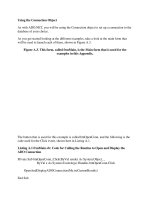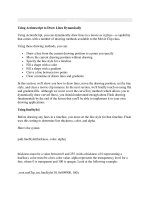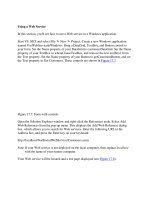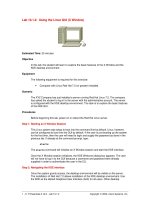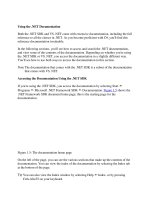Tài liệu Using the Web Forms GridView Control pptx
Bạn đang xem bản rút gọn của tài liệu. Xem và tải ngay bản đầy đủ của tài liệu tại đây (21.45 KB, 1 trang )
Using the Web Forms GridView Control
When you looked at accessing databases in previous chapters, you learned how to use the
Windows Forms DataGridView control. Web Forms have a similar control called
GridView. It has some differences because Microsoft designed it to be used in a
Microsoft ASP.NET environment, but the overall purpose is the same; to display and edit
rows retrieved from a data source. One difference is related to fetching and displaying
large volumes of data. In a Web Forms application, it is very likely that the client
application (or the browser) will be remote from the database that is being used. It is
imperative that you use network bandwidth wisely (this has been stated several times
already, but it is very important and worth repeating), and you should not waste resources
retrieving vast amounts of data that the user does not want to see. The Web Forms
GridView control supports paging, which allows you to fetch data on demand as the user
scrolls up and down through a DataSet.
Like the Windows Forms DataGridView control, the Web Forms GridView control is
designed to be used while it is disconnected from the database. You can create an
SqlDataSource object to connect to a database, populate a DataSet, and then disconnect
from the database. You can bind the DataSet in a SqlDataSource control to the GridView
control. Unlike a Windows Forms GridView control, the information in a Web Forms
GridView control is presented in a grid of read-only text (rendered as an HTML table in
the browser). However, properties of the Web Forms GridView control allow a user to
enter edit mode, which changes a selected row into a set of text boxes that the user can
use to modify the data that is presented. You will use this technique in the exercises in
this chapter.


